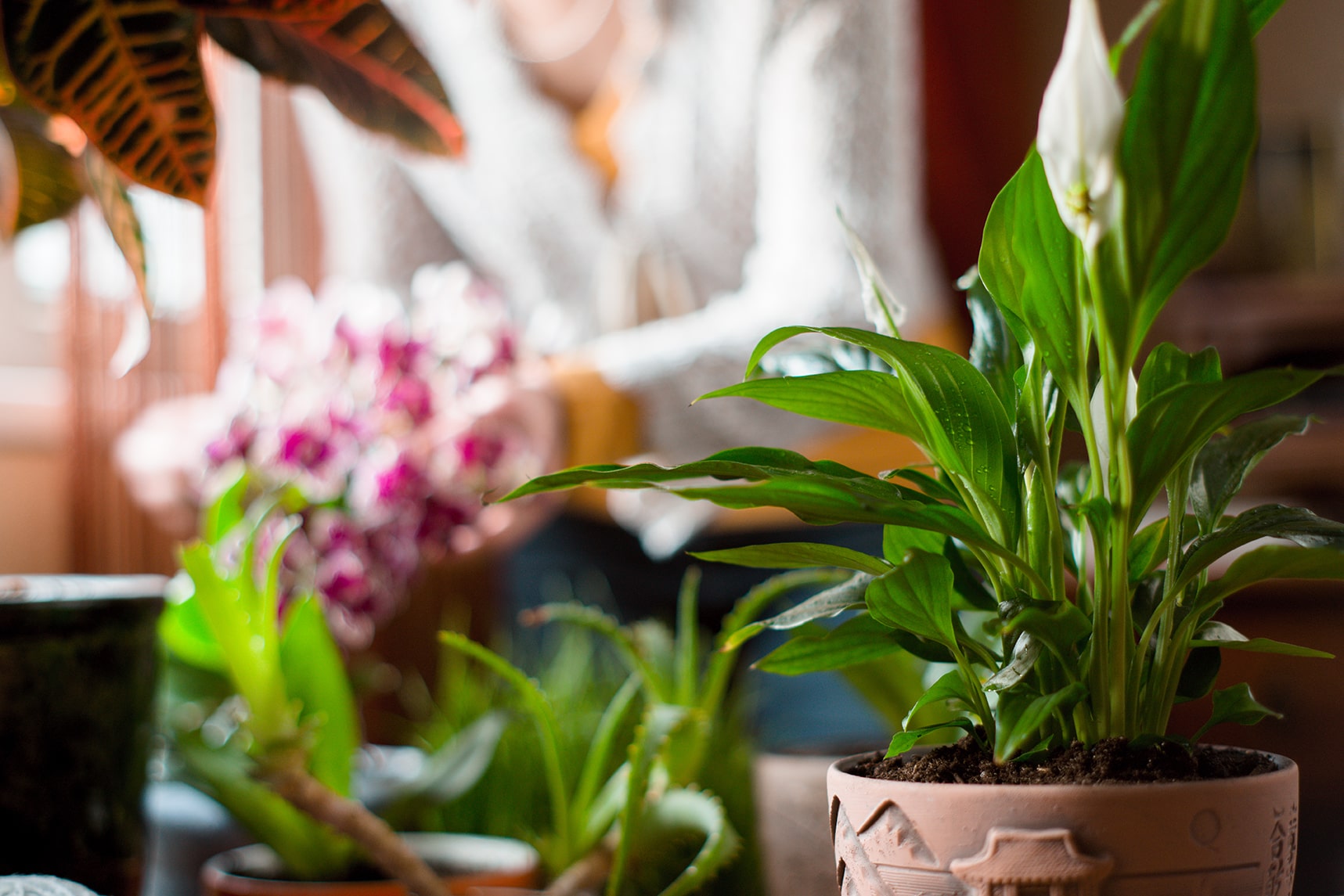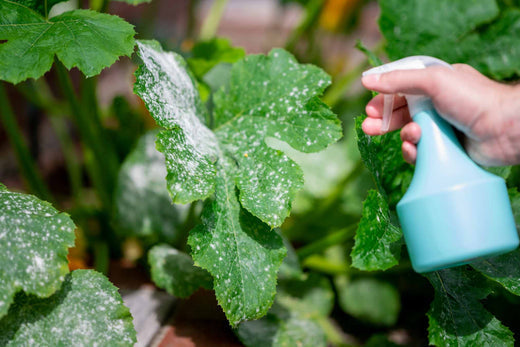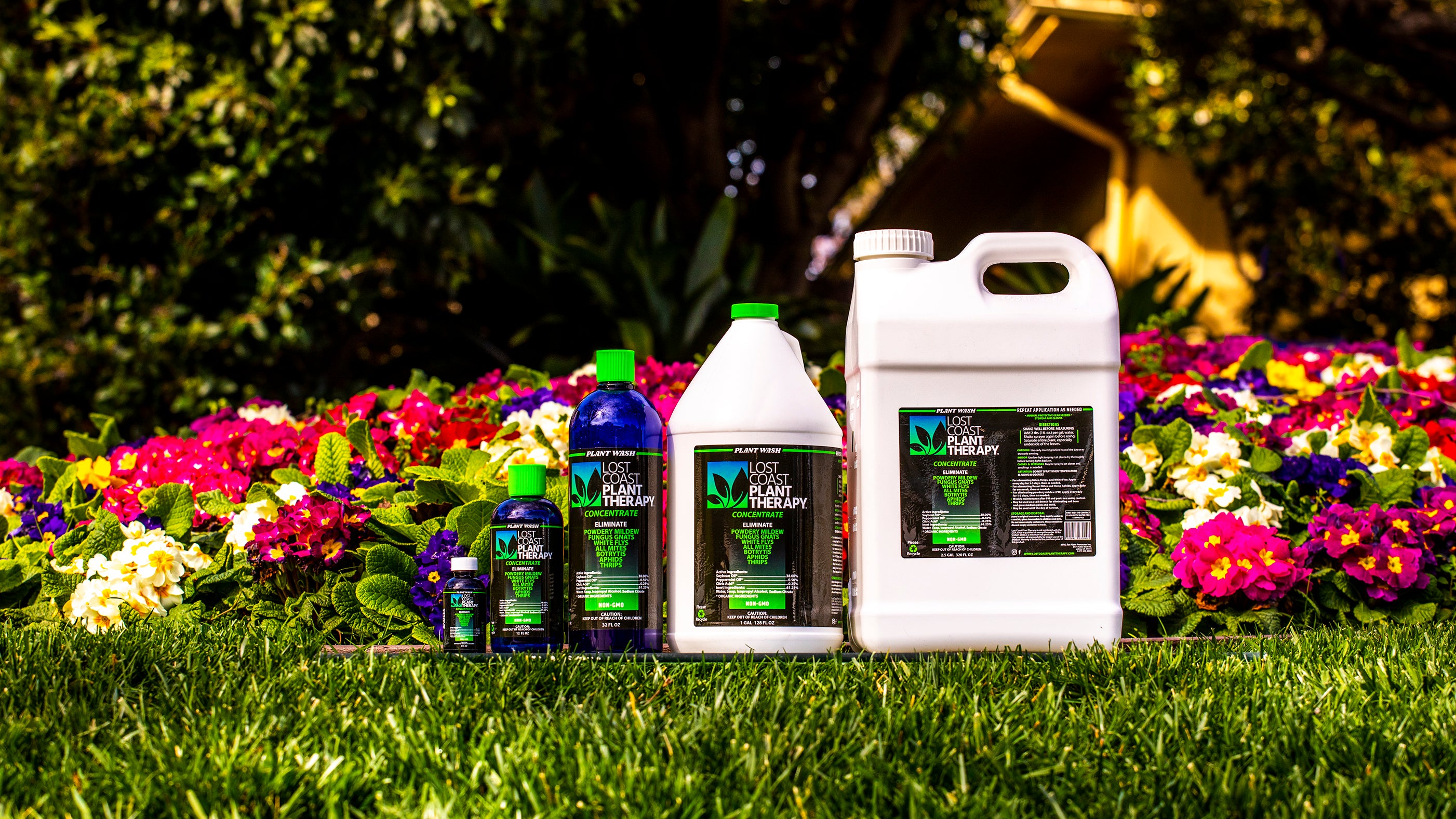Powdery mildew is a fungal disease that presents itself as a white, powdery substance on the leaves and stems of plants. This disease can affect a wide variety of plants, from the squash in your vegetable garden to the ornamental roses in your flower beds and understanding it is crucial, as it can spread rapidly, infecting plants and leeching their vitality.
As we navigate through the various aspects of powdery mildew control, we will discuss how to control existing powdery mildew and, most importantly, how to prevent its occurrence in the first place.
Whether you’re dealing with powdery mildew on your houseplants, on your outdoor plants, managing plants in shady areas susceptible to the disease, or seeking to protect the plants in your garden from being infected with common garden pests, the aim is to equip you with the knowledge to choose the best treatment for powdery mildew, to understand the conditions that foster its growth, and to implement strategies that prevent its spread, ensuring the plants in your garden remain healthy and vibrant.

Signs of Powdery Mildew on Your Plants
The first step in tackling powdery mildew is to recognize its presence, luckily, it is one of those plant diseases that announces itself rather visibly. Imagine you’re strolling through your garden, admiring your roses or inspecting your squash, and you notice some leaves have developed what looks like a dusting of flour. That is called powdery mildew. It’s most commonly found on the upper side of the leaves, but don't forget to check the undersides and the new growths as well.
The Impact of Powdery Mildew on Plants
But why should we worry about this white powdery growth? Powdery mildew does more than just spoil the look of your plants. It can hinder photosynthesis, the crucial process by which plants use sunlight to produce food. This results in a variety of symptoms, such as leaves turning yellow or brown, drying out, and potentially falling off. In severe cases, it can stunt plant growth and reduce yield, especially in edible plants like cucumbers and tomatoes.
Also, each species of powdery mildew is specialized to infect different types of plants. This means that the powdery mildew on your squash might be different from the one affecting your roses, yet the damage it causes remains similar.
The Subtleties of Infected Leaves
Infected leaves often start to curl or twist. If you grow varieties of plants susceptible to powdery mildew, keeping an eye out for these early signs is key. In our experience, catching it early can make all the difference.
Different Plants, Different Responses
It's also important to note that different plants respond differently to powdery mildew. Some might show a high degree of tolerance, exhibiting only mild symptoms, while others may react more severely.

Factors Contributing to Powdery Mildew Growth
Powdery mildew thrives in warm, dry climates with high humidity levels. Poor air circulation and overcrowded plants result in favorable conditions for powdery mildew. Understanding these factors is crucial in both preventing and treating the growth and spread of powdery mildew.
The Ideal Environment for Powdery Mildew
To effectively control, prevent and treat powdery mildew, it's helpful to understand a bit about its biology. Powdery mildew is caused by many different species of fungi, all of which thrive in warm, dry climates with high humidity - a paradoxical combination, but quite common in many gardening environments. The spores of these fungi are airborne, which means they can easily spread from one plant to another, especially in gardens with wind or human activity aiding their journey.
Certain plants are particularly susceptible, such as roses and squash, where the symptoms of powdery mildew are often clearly visible as a white powdery mildew covering the leaves. This spreading to other plants is a significant concern for gardeners, as it can affect a wide range of plants and vegetables.

The Role of Humidity and Temperature
Humidity plays a pivotal role in the life cycle of powdery mildew. Spores require a humid environment to germinate, yet the fungus itself prefers dry leaf surfaces for growth. This paradox makes managing powdery mildew challenging. The mildew spores are spread easily and can quickly infect your plants. They can germinate at relative humidity levels as low as 50%, but they thrive best when humidity is around 70-80%. Temperature also plays a crucial role. Most powdery mildew fungi prefer temperatures between 68 to 77 degrees Fahrenheit (20 to 25 degrees Celsius). These are the typical daytime temperatures in many regions during spring and fall, making these seasons especially susceptible to outbreaks.

Susceptible Plant Varieties
Certain plants are more susceptible to powdery mildew than others. Plants with dense foliage or those that grow in shady, humid conditions are particularly vulnerable. Common examples include roses, squash, cucumbers, strawberries and grapes.

How to Help Prevent Powdery Mildew
As a gardener, you might agree that the best approach to dealing with garden problems is to help prevent them before they start. Make sure to ensure good air circulation, use our Natural Plant Protector as a preventative, avoid overhead watering, and keep your garden clean of plant debris.
Cultivate Healthy Soil
Healthy soil is the bedrock of a thriving garden. Ensure your soil is well-aerated, rich in organic matter, and has good drainage. Balanced soil helps plants grow strong and resilient, making them less susceptible to powdery mildew and other diseases. Consider adding compost or other organic amendments to enrich your soil.
Understanding the Science of Air Circulation
Powdery mildew, like many other fungal diseases, thrives in stagnant, humid conditions. When the air around your plants doesn't move, it creates an environment where moisture can accumulate on the leaves and stems. This dampness is a breeding ground for spores. By improving air circulation, you effectively disrupt this comfortable habitat, making it less conducive for the fungus to grow and spread.
Adequate Plant Spacing
Ensure that each of your plants has enough room to breathe. Overcrowded plants not only compete for nutrients but also air. By giving them ample space, you allow air to move freely around them, reducing the humidity and moisture that powdery mildew spores need to thrive.
Watering Techniques
Water is essential, but how and when you water can make a big difference in disease prevention. Always water at the base of the plants to avoid wetting the foliage. Wet leaves can create an ideal environment for powdery mildew spores to germinate. Also, water your plants early in the morning. This allows the leaves to dry out during the day, reducing humidity levels around the foliage.

Pruning for Better Flow
Regular pruning is not just about keeping your plants looking neat. It's also about removing parts of the plant that are infected or susceptible to infection before they become covered in powdery mildew. Pruning also helps improve air circulation within the plant, reducing humidity and the likelihood of it developing. Make sure to remove any infected leaves immediately to prevent the spread of spores.
Monitoring and Early Detection
Frequent monitoring of your plants can help you catch powdery mildew early, before it becomes a bigger problem. Look for early signs of infection, such as white powdery spots on leaves, and take action immediately. Early detection is key to effective control.
The Limitations of Home Remedies for Controlling Powdery Mildew
While baking soda and milk have been reported to create an environment on the leaf surface that is less favorable to powdery mildew, their effectiveness can be inconsistent. Moreover, these remedies might not be suitable for all plants, and incorrect application can sometimes do more harm than good. For instance, too much baking soda can lead to leaf burn.
Embracing a Reliable Solution that can Control and act as a Powdery Mildew Treatment
At Lost Coast Plant Therapy, we believe in providing solutions that are not just natural and organic but also reliable and effective. Our Natural Plant Wash has been meticulously formulated to help control powdery mildew and soft bodied insects when used as directed.

Introduction to Our Natural Plant Protector Concentrate
As enthusiastic organic gardeners with over 53 years of experience, we encountered firsthand the challenges of battling garden issues like powdery mildew at our family farm in Humboldt, California. When conventional products failed to meet our standards for effectiveness and environmental safety, we asked ourselves: Could we do better?
This question was the start of our mission to create a product that not only tackles garden pests and diseases like powdery mildew but does so in a way that aligns with our deep respect for nature. We wanted to create a solution that is as gentle on the environment as it is tough on garden challenges. Thus Lost Coast Plant Therapy was born.
The Essence of Our Natural Plant Wash Concentrate
Organic Soy Oil: We use non-GMO, food-grade organic soy oil, which acts as a natural suffocant, coating powdery mildew and other soft-bodied pests, disrupting their life cycle.
Peppermint Essential Oil: Known for its natural bug-repelling properties, our food-grade peppermint oil adds another layer of defense against garden pests.
Citric Acid: Sourced from plants, this food-grade citric acid adjusts the pH of the plant surface, creating an environment that is inhospitable to powdery mildew.
Proprietary Soap Blend: Our specially formulated soap, derived from sustainable plant sources, aids in spreading the solution evenly across the plant's surface, enhancing its coverage and effectiveness.
Isopropyl Alcohol: We incorporate cosmetic-grade isopropyl alcohol to aid in quick drying and enhance the penetration of the solution, ensuring that it reaches deep into the nooks and crannies of plant foliage.
Sodium Citrate: Acting as a preservative and pH buffer, this food-grade ingredient ensures the stability and efficacy of our solution.
Purified Water: The foundation of our concentrate, providing the perfect medium to blend these ingredients into a homogenous solution.
See our ingredients here.

How Our Plant Wash Concentrate Works Against Powdery Mildew
Our plant wash suffocates and dehydrates powdery mildew on contact. Additionally, by altering the pH of the plant surface, it creates an inhospitable environment for the mildew, thereby controlling its spread.
Suffocation and Dehydration: A Dual Attack
At the heart of our Natural Plant Wash Concentrate’s effectiveness is its ability to suffocate and dehydrate powdery mildew. When applied, the organic soy oil in our formula coats the spores and mycelium of the mildew. This coating essentially suffocates the mildew by blocking the air passages through which it breathes. In parallel, the isopropyl alcohol facilitates rapid dehydration, disrupting the cellular integrity of the fungus. Together, these actions strike a lethal blow to powdery mildew, controlling its growth and spread on your plants.
Adjusting pH: Creating an Unfavorable Environment
Powdery mildew thrives in specific pH conditions on the plant surface. Our concentrate includes citric acid, which alters the pH of the plant's surface, making it inhospitable for powdery mildew to grow and reproduce. This pH adjustment is a critical component of our formula, offering a long-term preventative measure against future mildew outbreaks.
Penetration and Distribution: Ensuring Comprehensive Coverage
The proprietary soap blend in our formula plays a crucial role. It acts as an emulsifier, ensuring that all the active ingredients are evenly distributed and allowing the other active ingredients to deeply penetrate the fungus spores (or insect's body). This means that the concentrate reaches every nook and cranny of the plant, ensuring that no part is left unprotected.
See more on How it Works.

Safe for Plants, People, and the Planet When Used as Directed
Our commitment at Lost Coast Plant Therapy extends beyond just solving gardening problems. We are dedicated to doing so in a way that prioritizes the effectiveness of our product while being mindful of plant and environmental considerations.
We understand the importance of safety, especially when it comes to products used in gardens that yield food and medicinal plants. That's why our concentrate has been rigorously tested and formulated for effective use. It is also packaged in BPA-free and HDPE-grade bottles.

Application Techniques
Here’s a detailed, step-by-step guide to ensure you get the most out of our product, to help prevent and control powdery mildew and have your plants remain healthy and free from this pesky fungus.
Preparation Process
Mixing the Concentrate
Before you begin, it’s crucial to shake the bottle, make sure the concentrate is well mixed. Then, mix it properly with water. For general use, we recommend adding 1oz of our concentrate to 1 gallon of water. For severe infestations, you might consider increasing the concentration to 2oz per 1 gallon of water.
Getting the Equipment Ready
Use a clean sprayer for application. Whether it’s a hand-held sprayer for smaller gardens or a larger one for extensive areas, ensure it’s clean and functioning well. This helps in even distribution of the solution over your plants.

Application Process
Thorough Coverage is Key
Start by shaking the sprayer well to ensure the solution is evenly mixed. Then, begin spraying your plants. For effective use, thoroughly saturate the infected plant, paying special attention to the undersides of leaves.
Best Time for Application
We recommend applying our Natural Plant Wash early in the morning or late in the afternoon. Avoid applying during the hot midday sun or temperatures over 85 degrees Fahrenheit, as this can cause leaf burn. Even plain water applied to plants in the heat of the day can cause leaf burn.
Frequency of Application
For best results, apply our concentrate regularly, especially during the growing season. If you're using it as a preventive measure, a weekly application should suffice. In the case of an active infestation, more frequent applications might be necessary until you achieve control. Our product, when used as directed, is safe for daily application if required.

Lost Coast Plant Therapy
Our family-owned farm has a rich history spanning over 53 years in organic gardening. We use ingredients that are plant-based and NON-GMO, ensuring they meet high standards of purity and are either food grade or cosmetic grade. Every batch of our product is crafted in small quantities right here in California, USA, allowing us to maintain strict quality control.
See our store locator to find a gardening store near you, or contact us with any questions about our product. We're here to help and excited for you to join the many who us have seen real results with our product in their battle against powdery mildew.

Conclusion
Powdery mildew, with its characteristic white powdery appearance, is more than just a blemish on your plants – it's a signal of imbalance in your garden's ecosystem. This fungal adversary can leech the vitality from your plants, spreading swiftly and silently from one leaf to another, affecting a wide range of outdoor plants. From the lush leaves of squash to the delicate petals of roses, no plant is entirely immune to its reach.
Recognizing the first signs of powdery mildew before your healthy garden becomes infected with powdery mildew and understanding how conditions in your garden can cause powdery mildew, are key steps in maintaining healthy plants.
With Lost Coast Plant Therapy, plant growers have an effective, environmentally friendly tool at their disposal when used as directed.

FAQ
What is powdery mildew and how does it spread?
Powdery mildew is a common fungal disease that affects a variety of plants. It appears as white spots on the foliage and spreads through wind-borne spores that land on susceptible plants.
Which plants are most susceptible to powdery mildew?
Many plants can be susceptible to powdery mildew, especially those in shady, humid conditions. Commonly affected plants include roses, squash, cucumbers, and grapes.
Can powdery mildew spread from one plant to another?
Yes, powdery mildew can spread from one plant to another, especially when the spores are carried by the wind or when plants are in close proximity with leaves touching.
Are there different species of powdery mildew?
Yes, there are many different species of powdery mildew across the entire planet, each adapted to infect specific types of plants.
What are the typical symptoms of powdery mildew on plants?
Symptoms include white powdery spots on leaves, distorted or stunted growth, and sometimes leaf drop.
How can powdery mildew be effectively controlled?
Effective control includes using using Lost Coast Plant Therapy when used as directed, improving air circulation, reducing humidity around plants, and removing affected parts of the plant.
Is powdery mildew harmful to the plant, and can it leech nutrients?
Powdery mildew can be harmful as it covers the leaf surface and affects photosynthesis, potentially leeching nutrients and vitality from the plant.
How can I prevent powdery mildew in my garden?
Prevention strategies include choosing resistant plant varieties, ensuring good air circulation, keeping foliage dry, and regularly inspecting plants for early signs of infection.
Does powdery mildew affect the fruit or just the leaves of plants?
Powdery mildew primarily affects the leaves, but it can also spread to the stems and sometimes the fruit, affecting the overall health of the plant.
How does weather influence the development of powdery mildew?
Powdery mildew thrives in warm, dry climates with high humidity levels, so certain weather conditions can promote its development.
See more FAQ's here.

Additional Resources
Powdery Mildews - Colorado State University
Powdery Mildew Diseases of Ornamental Plants - University of Massachusetts Amherst
Powdery mildew | Description, Symptoms, & Control - Britannica
Powdery mildew in the flower garden - University of Minnesota






